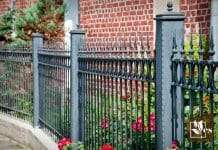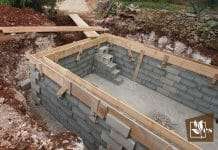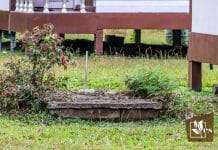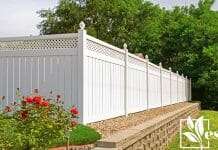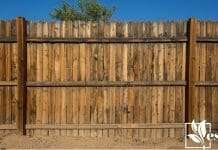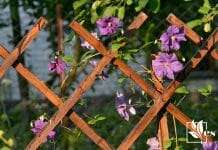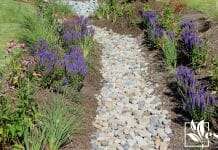Stuck deciding how to go around a tree with a fence without cutting it down? Fret not, for we have some quality ideas up our sleeves to help get you out of this frustrating situation, complete with a thorough discussion of their strengths and weaknesses. 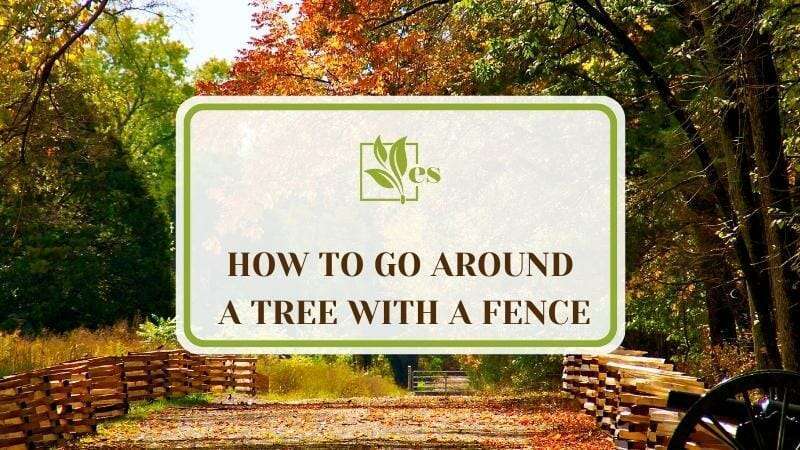
The perfect choice is not always the one that looks the best – there’s a lot to consider. After reading this article, you are sure to be able to make an educated decision that both solves your problem and looks as good as possible!
JUMP TO TOPIC
Tips on How To Go Around a Tree With a Fence
Let us look at how you can build a fence around that pesky tree blocking your meticulously planned path. Remember: there is no one-fits-all solution here. It depends entirely on the tree, its roots, your aesthetic sense, fencing purposes, and legal factors like property boundaries.
1. Use the Tree as a Fence Post
You can always secure the fence to the tree trunk using nails, screws, or some other arrangement. If you think about it, the tree becomes a living post!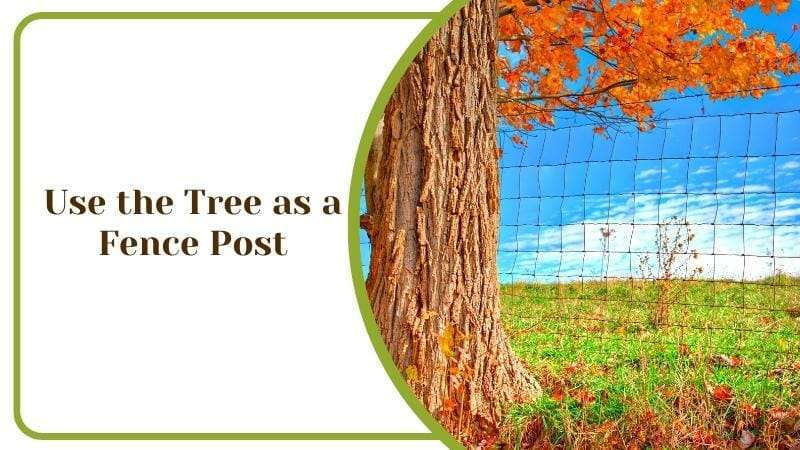
This method is ideal when a small part of the tree cuts into the fence line. It works well with wired rail fences and is extremely simple to implement.
In terms of aesthetics, this approach is a solid choice if you live in the countryside. However, it will probably seem out of place in the city and, in general, urban areas.
Be warned that if you attach the fence directly to the tree’s bark with nails and screws, you risk exposing the tree to diseases and other problems. To avoid these issues, you should put a treated chunk of wood or metal in-between them and secure the fence to it instead. That way, no part of the fence directly touches the bark.
2. Sandwich the Tree
You could try building the fence outwards from the two extreme sides of the tree, with the tree in between the fence’s ends. This way, you do not need to reposition the fence, and the tree elegantly becomes a part of it – useful if it is right in the middle of the fence line. 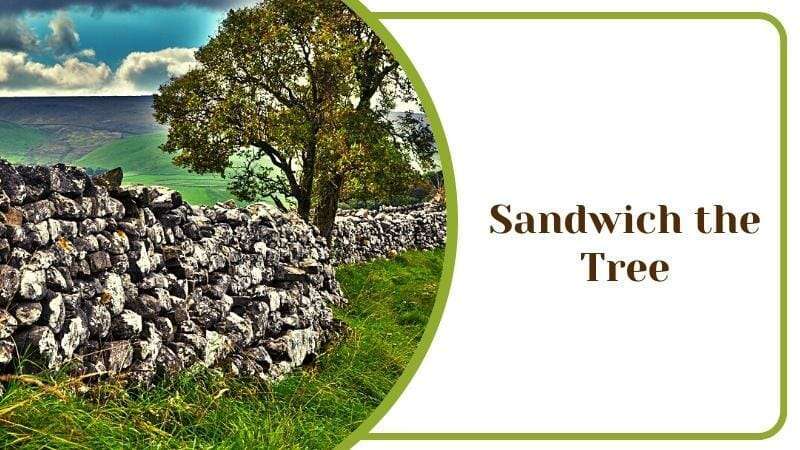
At first, letting the tree interrupt your fence might not seem like a good idea. However, when done right, it looks very natural and appealing.
For trees with complex shapes, you can shape the fence’s edges to match them. This edge shaping also enhances privacy and should be a high priority if you are trying to build a privacy fence. Leave only a slight gap to prevent the tree’s movements from damaging it on windy days.
Generally, this approach works well when the tree is fully grown with deep-nested roots occupying a small area around the tree. In these scenarios, it is easy, effective, and visually appealing. No repositioning also means no arguments with the neighbors over property boundaries – a welcome benefit!
However, you would need to choose a fence type that does not touch the ground except at the posts (e.g., a picket fence). Additionally, if the tree roots have a large spread (cover a large area around the tree) and are close to the surface, it will be harder to place the fence’s posts near the tree without damaging the roots.
Finally, a general precaution: if the tree is young, you should leave extra space between it and the fence to allow its safe growth. Otherwise, the tree might grow into the fence and damage it.
3. Curve the Fence Around the Tree
You can curve the fence around the tree or box it out if the area around the tree and the fence line is your property. You can do this in whatever shape you prefer: perpendicular bends, arcs, square boxes, etc. 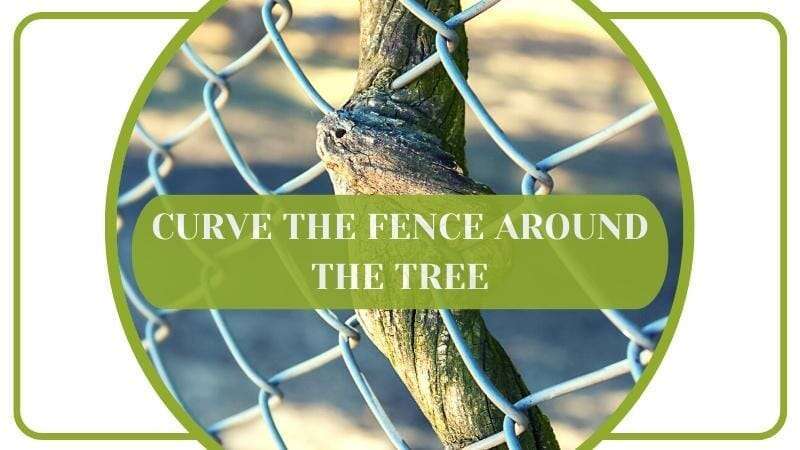
This approach is very convenient and preserves all the qualities of a fence. The only real problem is the property boundary.
Generally, you put up the fence on the property line that separates your property from someone else’s (e.g., your neighbor’s). Thus, in most situations, you will not have any room to divert the fence without losing some space on your property or encroaching on your neighbor’s property, both of which are far from ideal.
In these cases, the only possible solution is to discuss with your neighbor or consider another approach that keeps the fence line straight.
4. Create Windows in the Fence
If parts of a tree’s body (branches or trunk) are cutting the fence line and positioning around them is not an option, you can create windows in the fence to let them pass through it instead. Consequently, you partially accommodate the tree in your fence’s design without having to alter the path.
The windows have the potential to look very fanciful and pretty. It might seem that the fence is flimsy with this approach, but there are several examples of these having survived long years.
Sadly, however, this approach is not suitable for privacy, especially if the windows are at a lower height. To account for the tree’s movements and growth, you must leave significant gaps around the trunk and branches during installation.
Additionally, a windowed fence requires frequent periodic maintenance. As time passes and the tree outgrows the original window size, you will also have to adjust the fence accordingly.
5. Pollard the Tree
Pollarding is a pruning method for trees that involves cutting about 8 feet or upwards up the trunk, keeping only a few branches at the desired length to allow for regrowth. After pollarding, you can install the fence in the free space.
Pollarding is a good option when the fence is high, and the upper branches are the only parts of the tree interrupting the fence line. A pollarded tree’s branches eventually regrow (duration varies from tree to tree), but the new branches sprout away from the fence as desired.
Before you go ahead and pollard a tree, you should make sure it is on your property. Unfortunately, not all trees take well to pollarding, so make sure you know what species of tree you are dealing with when opting for this choice.
Pollarded trees look rather dull until regrowth. It is not as bad if there are several pollarded trees together. Still, you should know that the regrowth period can take up to several years. If that is a problem and time is not a luxury you can afford, try looking at another option.
6. Coppice the Tree
Coppicing is another ancient technique that involves cutting a tree repeatedly about its young stems near the ground level, ultimately reducing the tree to a stool. You can think of coppicing as a more extreme version of pollarding to achieve the same goal: regrowth. 
Coppicing is effective if the tree interrupts the fence close to the ground level, as with large trees or those with sharply bent trunks. Once you have installed the fence next to the copse (a coppiced tree), the resulting regrowth extends the tree away from it.
As with pollarding, you should ensure before coppicing a tree that it lies within your property boundary and that the tree in question is coppice-friendly!
On the other hand, since coppicing reduces a tree down to the ground level, it significantly affects the area’s visual appeal until regrowth. Therefore, if you want to erect a fence within an active recreational spot, it might be worthwhile to consider another option.
7. Adjust the Fence Height
If the upper branches of a tree (not on your property) block the fence at a certain point, you could adapt the fence’s height so that the upper edge stays underneath the branches in that region.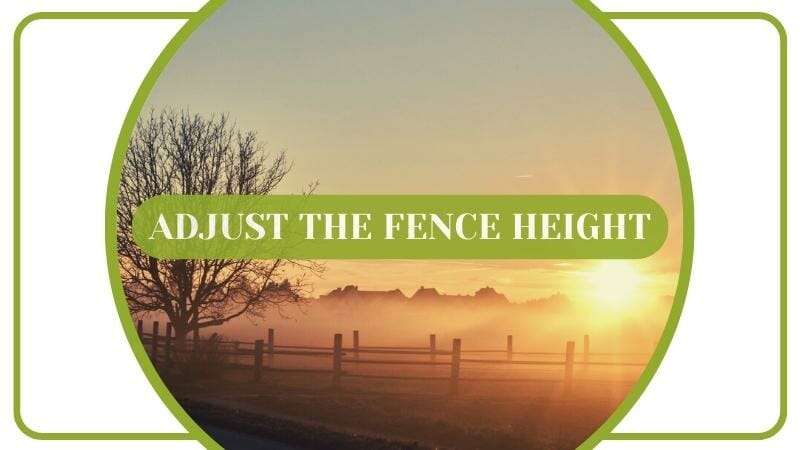
This solution is a quick and hassle-free alternative to pollarding if the tree is not on your property. Since you are the one who is building the fence, there is no need to mull over the decision with others. You could also smooth the transition from the upper end to the lower end of the fence for a prettier look!
However, if the height reduction makes the fence shorter than your minimum requirement, this is not a viable choice. For example, if you intend to address privacy or trespassing concerns, the fence’s height should be large enough so that others cannot peek or vault over it. If there are gaps in your fence, you can easily fill them.
In addition, if looks are a priority, this fix will probably not fit in well with the rest of your fence until you make additional design choices to account for the height mismatch.




